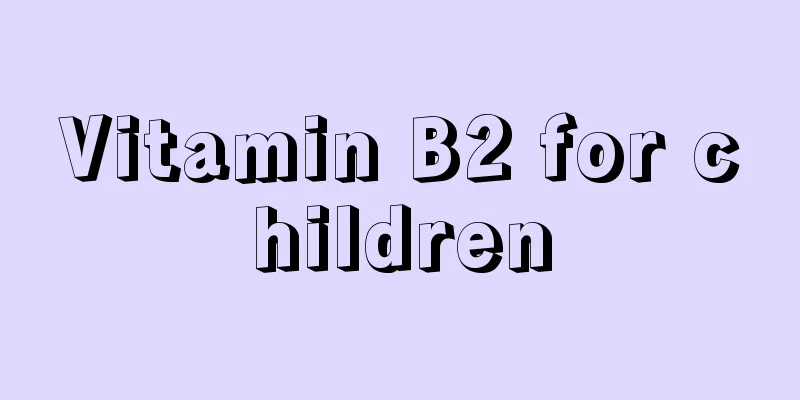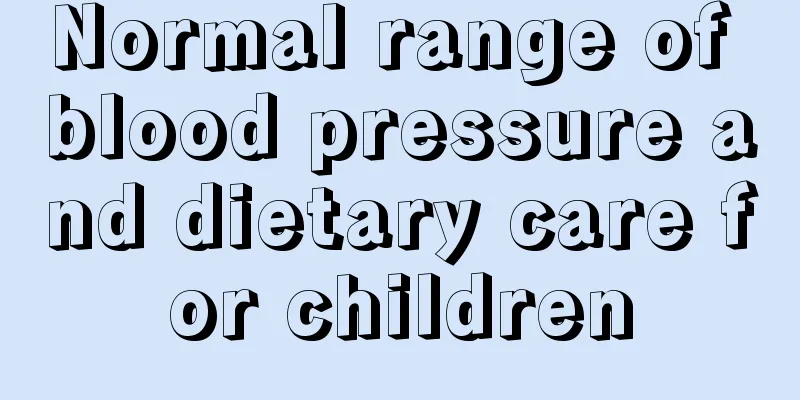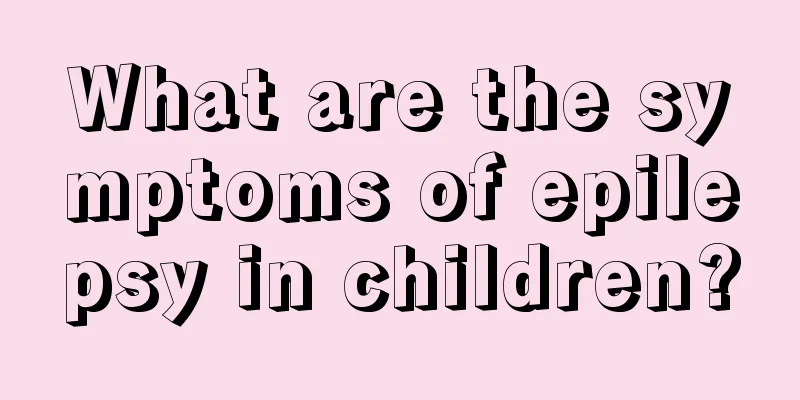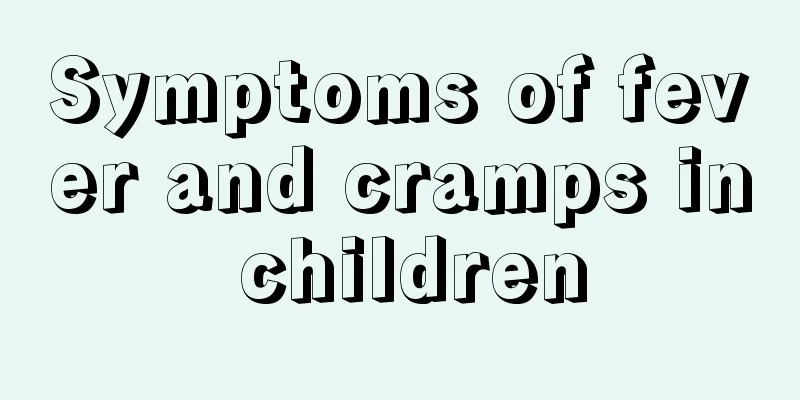Vitamin B2 for children

|
Vitamin B2 is a common type of vitamin that plays a very important role in metabolism. If children lack vitamin B2, they will develop vitamin B2 deficiency. This is mainly because children's bodies develop rapidly and their metabolism is active, which leads to the phenomenon that vitamin B2 cannot keep up with the demand. Parents should be aware of the symptoms of vitamin B2 deficiency in children and take timely measures when they discover them. Vitamin B2 deficiency in children Symptoms and signs Riboflavin deficiency mainly manifests itself in changes in the lips, tongue, eyes, and skin. 1. Lip and tongue symptoms are more common in older children. (1) Angular cheilitis: Also known as angular cheilitis, the corners of the mouth are moist, white, eroded, and gradually cracked at the onset. The cracks may extend outward from the corners of the mouth and may be up to 1 to 2 cm long. They may occur on one side or both sides, but may be more severe on one side. The epidermis in the fissure peels off, forming ulcers, which often have yellow or yellow-black scabs and bleed easily when the mouth is opened. Angular cheilitis in older children tends to become chronic, and dark brown pigmentation is common at the junction with the skin. (2) Cheilitis: The entire mucous membrane of the upper and lower lips may appear bright crimson, and the number of longitudinal fissures on the lips may increase. Sometimes the fissures may cause bleeding when the mouth is opened wide or when crying. Scattered blood scabs can be seen along the junction of the mucosa and the skin. This lesion is more severe on the lower lip and leaves a narrow scar after recovery. (3) Glossitis: The tongue is smooth and bright magenta in color. When viewed under strong sunlight, a slight blue hue can be seen in the red. In cases of glossitis, the fungiform papillae and contour papillae at the back of the tongue are thickened in the early stages, and then they atrophy, disappear, and become flat. The middle part of the tongue is red, atrophic and fissured. Pain and loss of taste. 2. Eye symptoms are not as common as lip and tongue symptoms. It usually presents as vascular proliferative conjunctivitis, and is characterized by the invasion of inflammatory proliferating capillaries from the conjunctiva into the cornea. Therefore, within 1 to 2 days, many capillaries can be seen at the edge of the conjunctiva forming annular keratitis. 1 to 2 small white blisters may also appear at the edge of the cornea. Sensation of photophobia, tearing, burning, or itching. As the disease progresses, the proliferating capillaries may invade the entire cornea, causing corneal opacity and ulcers, leading to iritis. The eyelid margin is also inflamed, especially the lower eyelid and canthus. Redness, swelling, and a thick discharge are common. 3. Skin symptoms are mainly seborrheic dermatitis, which often occurs in areas with more sebaceous glands such as the junction of the nose and lips, the wings of the nose, behind the ears, and between the eyebrows on the forehead. At the beginning, sebum overflows in the form of filamentous sebum, which fills the opening of the sebaceous glands and protrudes above the skin surface. Most of it forms dry scabs, and yellow-white desquamation can be seen. After wiping it out, red spots can be seen in the skin folds. Some skin symptoms appear as scrotal dermatitis or labia inflammation. 4. Anemia: Normocytic normochromic anemia with bone marrow dysplasia may be seen. Medication 1. General treatment: Eliminate the cause and give fresh foods rich in riboflavin, such as animal liver, kidney, heart and milk. Others include brown rice, spinach, soybeans and eggs. 2. Systemic treatment: Give vitamin B2 (riboflavin) 5 mg orally, 3 times/d. Dry yeast and vitamin B complex tablets can also be used, or intramuscular injection of vitamin B2 5-10 mg per day. 3. Local treatment: Angular cheilitis can be treated by applying 1% silver nitrate solution twice a day, or by applying tin powder, pearl yellow powder, etc. Scrotal dermatitis can be treated according to the general principles of dermatitis and eczema. |
<<: Will children mature early if they drink soy milk?
>>: Irritating cough in children
Recommend
What should babies eat to strengthen their spleen and stomach?
Children's spleen and stomach are very fragil...
How to treat nausea and diarrhea in children?
The baby's nausea and diarrhea are mostly cau...
What are the methods for treating rhinitis in children?
The prevalence of rhinitis is gradually increasin...
Can children take health supplements regularly?
Looking at the children's health care product...
What should I do if my child has high platelet count?
Platelets are more harmful to adults, let alone c...
Baby cough due to cold_Children cough due to cold
I believe every parent has experienced their baby...
What should I do if my child wakes up coughing in the morning?
It is very normal for children to cough in daily ...
Why is the child sweating on his head?
Children are in the golden period of growth and d...
The child felt nauseous after taking the anti-inflammatory injection and vomited all the medicine after taking it.
In life, many children are particularly susceptib...
Why are the newborn's legs shaking?
It is quite common for newborns to have trembling...
What should I do if my two-year-old baby has a sore throat and blisters?
When the baby is two years old, he can generally ...
How to treat hypoxic-ischemic encephalopathy in premature infants
When facing hypoxic-ischemic encephalopathy in pr...
3-year-old baby height and weight
When the baby reaches the age of three, his weigh...
What happens when children have hypoplastic tooth enamel?
Children's dental health requires special att...
What is the reason for high red blood cell count in children's urine routine
There are many reasons why children's routine...









